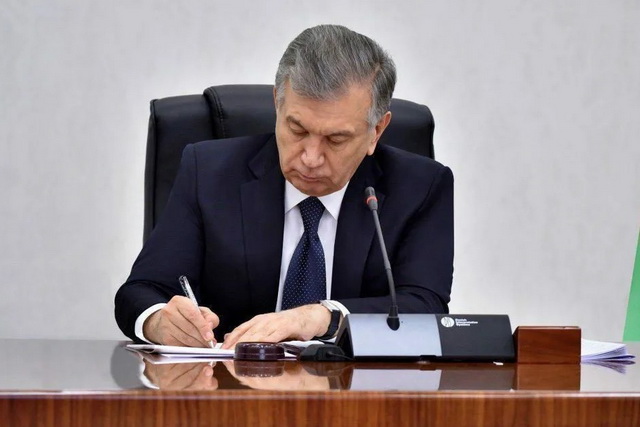
Uzbekistan adopts comprehensive development program for Syrdarya region
Uzbekistan adopts comprehensive development program for Syrdarya region
Tashkent, Uzbekistan (UzDaily.com) — President of Uzbekistan Shavkat Mirziyoyev has signed a resolution aimed at the comprehensive development of Syrdarya region.
Previously, the Agency for Strategic Reforms, in collaboration with the regional administration, conducted a detailed analysis of the region’s potential, identifying key growth points. Building on this work, a meeting chaired by the President was held on February 25 to discuss the socio-economic development plans for 2025. As a result, on 6 March 2025, Resolution No. PP-93 “On Measures for Further Improvement of the Business Environment, Infrastructure, and Living Standards in Syrdarya Region” was adopted.
The document outlines key priorities for the current year, including a 6.2% increase in gross regional product, a 15% growth in the services sector, a 6.5% rise in industrial production, and a 4% expansion in agriculture. Additionally, the region plans to attract US$2 billion in foreign investments, boost exports to US$500 million, reduce poverty by 7%, cut unemployment by 5%, and create 16,300 new jobs.
To achieve these goals, several major initiatives will be implemented. Special industrial zones covering 1,080 hectares will be established in Gulistan, Shirin, and the districts of Bayaut, Gulistan, Mirzaabad, Akaltyn, Syrdarya, and Khavast. Under the “Develop Business in Syrdarya” program, US$5 billion in investments will be directed into the electrical, pharmaceutical, and textile industries, agro-processing, and logistics between 2025 and 2027.
To enhance the region’s transit potential, service areas and rest stops will be constructed on 50 hectares along international highways M-39, M-34, A-373, and A-376, creating 101 commercial and service facilities and generating 365 new jobs.
The agriculture sector is also a priority. In 2025, 73,000 hectares of land will be cultivated with cotton, while 25,000 hectares of low-yield and irrigation-challenged land in eight districts will be used for rice farming. Additionally, at least 20% of artificial reservoirs will be modernized to triple or quadruple their productivity in aquaculture.
Tourism and service projects will be developed in protected areas along the Syrdarya River, drawing inspiration from Vietnam, Japan, Türkiye, and China. A multi-level fish trade complex will be established, and a new management entity—“Development of Services, Trade, and Agro-Ecotourism”—will oversee these initiatives.
As part of international trade expansion, border customs checkpoints "Khovosobod-Zafarobod" and "Akaltyn" have been granted international status. Trade and logistics centers will be built nearby, facilitating stronger trade ties with Kazakhstan and Tajikistan.
By 2030, the population of Gulistan is expected to quadruple to 400,000. To support this growth, the city will be integrated with neighboring districts (Bayaut, Mirzaabad, and Gulistan), a digital city map will be developed, and international and major local brands will be attracted.
In transportation, modern high-speed electric trains will be introduced on the "Tashkent-Chinorkent-Tashkent" route, with an extension to Gulistan. Additionally, a monthly transit pass system will be introduced for passengers.
In education, the Yangiyer branch of the Tashkent Chemical-Technological Institute will be upgraded to become the Yangiyer State Engineering and Agro-Technological Institute.
A large-scale housing renovation program will replace 1,400 outdated two-story buildings with modern residential complexes. A dedicated renovation authority with legal status will be established to oversee this process.
Over the next two years, an additional US$100 million will be allocated for infrastructure modernization, including roads, bridges, water supply, and sewage systems, as well as for social facilities such as kindergartens, schools, and medical institutions.
The implementation of these measures is expected to provide a strong boost to investment, infrastructure development, and poverty reduction in the region.